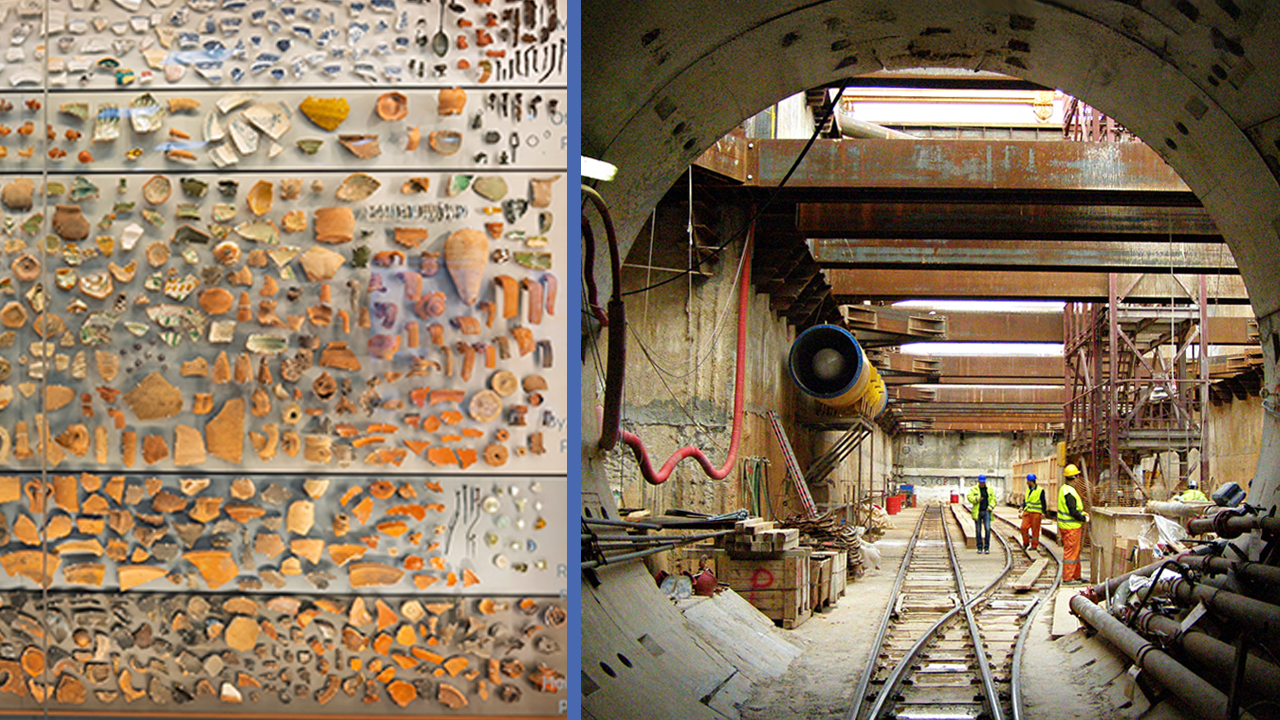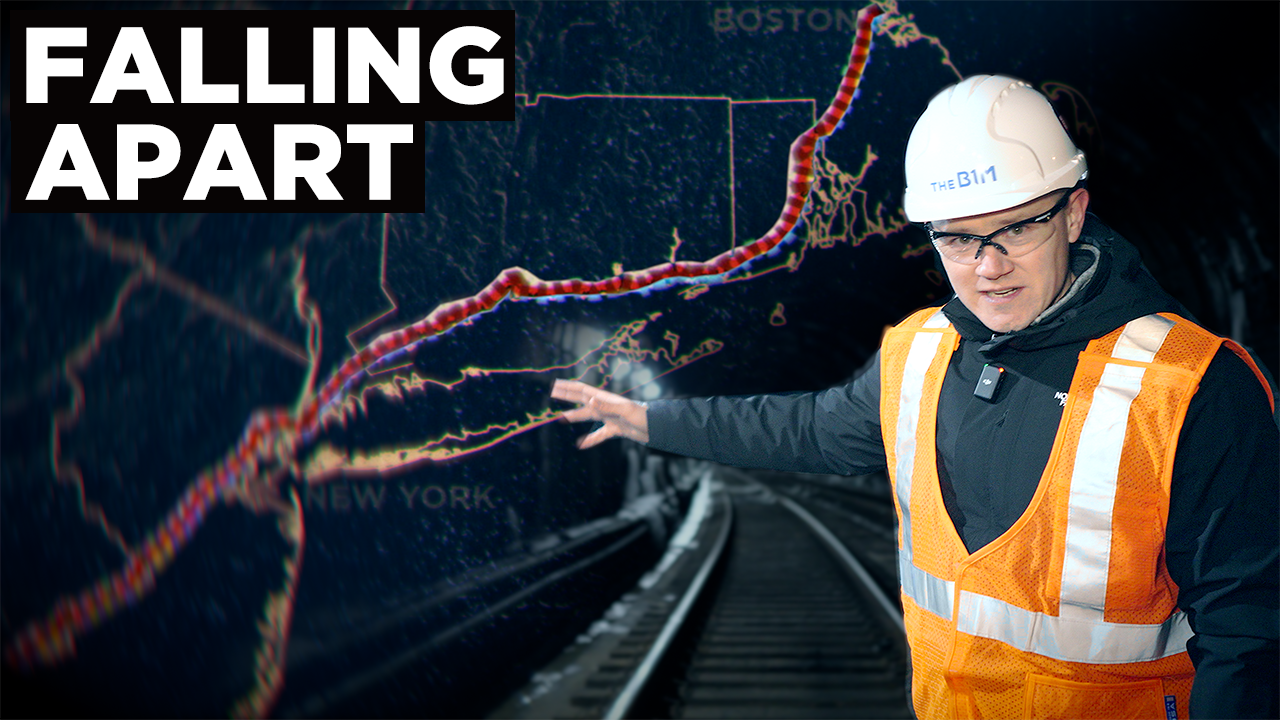Why Russia Built a Skyscraper in the Middle of Nowhere
- Youtube Views 0 VIDEO VIEWS
Video narrated and hosted by Fred Mills. This video contains paid promotion for Brilliant.
Do you know where the tallest building in Europe is?
Well, it’s not the Shard in London, or the Commerzbank Tower in Frankfurt, or Warsaw’s brand new supertall, Varso Tower.
It’s actually way over in the outskirts of St Petersburg, 12 kilometres outside of the city centre.
This is the Lakhta Center and at 462-metres it is by far the tallest building in Europe – it stands higher than the Empire State Building and even the roof of One World Trade Center.

Above and Below: The Lakhta Center is the northernmost skyscraper in the world and was one of the most technically difficult in the world to build.

It’s also the northernmost (and probably coldest) skyscraper in the world and more than three times higher than the next tallest building in St Petersburg.
So why have the Russians built such a colossal building… and why have they built it here?
The tallest building in Europe
This building is huge. The Lakhta Center contains the largest volume of glass ever in a high-rise structure: there are more than 16,500 curved panes.
Just to build its foundations took the largest continuous concrete pour ever – even more than was needed under the Burj Khalifa. An astonishing 20,000 cubic metres of concrete was placed over a 49 hour period, setting a new world record.
Step inside and you’ll find a sports centre, shops, restaurants, offices: even a planetarium.
That striking, twisting design made it one of the most technically difficult skyscrapers ever constructed.
The building is actually at its thickest about a third of the way up, at level 17. Here the diameter bulges by more than two metres beyond what it is at its base.
The tower’s unique form takes its inspiration from the footprint of the Nyenschantz fortress – a castle built by the Swedes in 1611 and sitting in what is now present day Saint Petersburg.

Above: The tower's shape is based off the Nyenschantz fortress. Image courtesy of Nyenschantz (CC BY-SA 2.5).
That shape is then rotated a full 90 degrees from the base to the top of the spire.
It means that every floor is slightly different to the one below it. While this posed numerous challenges to the construction team this shape tricks the wind, disbursing the considerable wind loads at that height.
This is actually why many supertalls aren’t simply rectangular blocks. The wind would bat them about like a tall post in a storm. Having clever forms that are rounded or taper is actually good for stabilising the structure.
Typically a building of this height would require a damping system to keep it from swaying. Because of this shape the Lakhta Center doesn’t need it.
The northern-most skyscraper in the world also faces another not entirely unexpected problem: ice.
The top of the spire has an open mesh to allow for wind to pass through, while this also helps with overall stability; it means that ice can accumulate here and potentially drop… 460 metres to streets below.

Above and Below: Special ice-catching mechanisms had to be installed on the spire.

A number of measures were taken to prevent this including special ice-catching frames which were rigorously tested beforehand. Some of the ice is even collected and reused for air conditioning.
Why it's so huge
From a distance the building looks like a ship setting off into the Gulf of Finland. Although others have pointed out it looks like a flame, which would be apt as this building is the headquarters for what was once the largest natural gas company in the world: Gazprom.
Gazprom is Russia. It is the biggest company in the country by far and has all sorts of problematic links to the state of Russia and how Russia asserts itself on the rest of the world. That’s too many oligarchs for us to get into in this video.
The point is this skyscraper, while housing offices for the country’s largest company, also serves another point: it is a symbol.
Towering 462 metres above the Gulf of Finland, its top 117 metres is actually unusable space and is just the spire. This part of a skyscraper is called “vanity height” as it serves no real purpose other than to extend the height of a building.
While not the worst example of vanity height – that would arguably be the Burj Khalifa's 200-metre high spire – it does illustrate how important it was for Gazprom that this building not only dominate Saint Petersburg’s skyline, but also that of Europe.
The building is intended to anchor the start of a new modern city away from the historic centre of Saint Petersburg.
There are actually plans for two more skyscrapers next to it, standing 500-metres and 700-metres high respectively – although with the current state of Gazprom, those might be some way off.

Above: Plans for two more towers have been paused. Image courtesy of Kettle Collective.
The war in Ukraine has meant many countries are refusing to work with Russian companies. Sanctions have hit Gazprom hard and the company reportedly lost $7BN in 2022.
Skyscrapers, but not in the city
Now, this idea of building a sleek, modern Manhattan-like downtown away from picturesque boulevards is pretty common in Europe.
As a whole, Europe doesn’t really like skyscrapers and has never embraced them to the same extent as the US and Asia, instead treating them like a dirty secret that’s kind of tucked away from view.
Paris has its La Défense, London has distinct clusters like the City and Canary Wharf, and Milan has the Porta Nuova district.
Russia has maybe one of the largest examples of this already with the Moscow International Business Center or Moscow-City.
First conceived of in 1992, after the fall of the Soviet Union, Moscow-City is a designated area of the Russian capital for skyscrapers.
Once an industrial wasteland full of abandoned factories the area is now home to the highest numbers of skyscrapers in Europe, with six supertalls all right next to each other.
Just this area alone contains seven of the tallest buildings in Europe.

Above: Moscow has its fair share of skyscrapers... outside of the main city.
Moscow-City, like Canary Wharf and La Défense, is designed as a financial hub, an enclosed space for commercial developments and offices. But do these spaces still work or are they remnants of an old way of thinking?
Moscow-City was 45 percent empty for some time, according to estimates, and is plagued by issues, including a lack of connection to public transport thanks to its out of the way location.
With the Ukraine War set to wipe off 15 years of economic progress for Russia, the future isn’t exactly bright either. Many companies have left the country and closed up their offices in Moscow-City.
Europe’s other financial districts are facing an identity crisis in the wake of the work from home revolution and the post-covid slump in office occupancy rates. Canary Wharf in London is having to rebrand itself and build more and more residential high rises.
We’re seeing cities around the world move away from the idea of “zoning”, of having separate areas for where people live and work and shop. Mixed-use districts where all of these activities and types of buildings can exist in one place are what people want and what people now expect.
So what’s to be done with the Lakhta Center?
The other skyscrapers meant to surround it may never materialise, but it remains an example of impressive engineering and incredible vanity, even if there isn’t much else around it.
This video and article contain paid promotion for Brilliant. To try everything Brilliant has to offer for free for a full 30 days, visit https://brilliant.org/TheB1M/ you’ll also get 20% off an annual premium subscription.
Video narrated and hosted by Fred Mills. Additional footage and images courtesy of Lakhta Center and Evgeny Gerashchenko (CC BY-SA 2.5).








